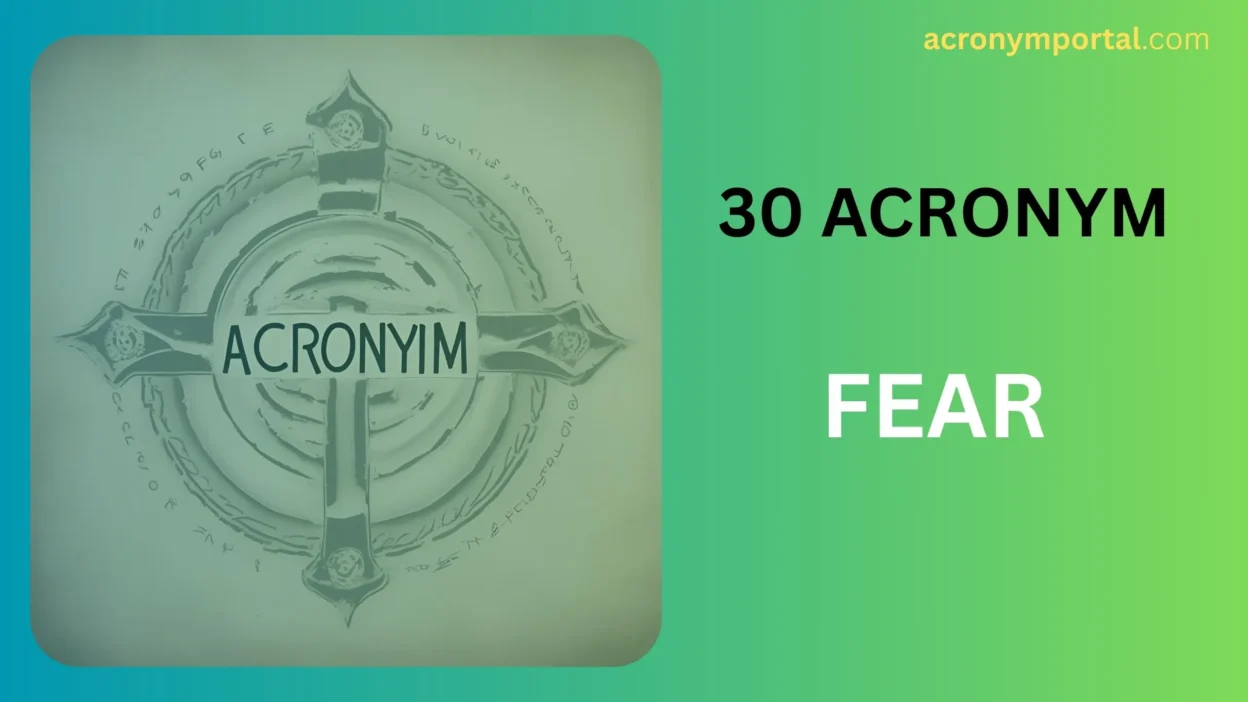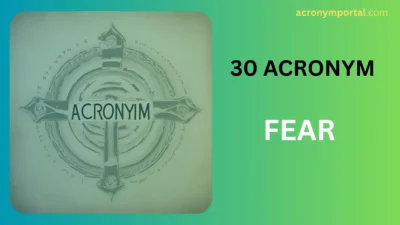When people hear “FEAR acronym,” the first thought is usually anxiety, paralysis, or avoidance. In pop psychology, it’s sometimes flipped into acronyms like:
- False Evidence Appearing Real, or
- Face Everything And Rise
But emotionally and metaphorically, FEAR is more than just nerves. It often reflects traits like hyper-awareness, self-preservation, caution, vulnerability, and emotional sensitivity. It can signal survival instinct, deep empathy, or trauma responses.
If you’re writing a character, describing yourself, or talking about emotions, this list will help you communicate the nuance of fear—without always using the word “afraid.”
🧠 30 Alternatives to the “FEAR Acronym” Personality
1. Anxious
Meaning: Experiencing nervous unease or worry.
Example: He felt anxious before the interview.
When to use: Best for general fear or social unease.
2. Wary
Meaning: Cautiously alert; watchful of danger.
Example: She was wary of strangers in the new city.
When to use: When someone is careful but not paralyzed.
3. Apprehensive
Meaning: Nervous about something coming.
Example: He was apprehensive about the meeting.
When to use: Formal tone, future-focused fear.
4. Timid
Meaning: Lacking in self-confidence; shy.
Example: The timid child clung to her mother.
When to use: Emotional softness or social insecurity.
5. Cautious
Meaning: Avoiding risk; careful.
Example: She was cautious about starting a new job.
When to use: Smart hesitation—not always rooted in fear.
6. Vulnerable
Meaning: Open to emotional or physical hurt.
Example: He felt vulnerable sharing his story.
When to use: Emotional openness or sensitivity.
7. Guarded
Meaning: Emotionally defensive or reserved.
Example: She was guarded around new people.
When to use: Self-protection after past hurt.
8. Overwhelmed
Meaning: Emotionally overloaded.
Example: He was overwhelmed by the pressure.
When to use: High-stress situations where fear and responsibility clash.
9. Startled
Meaning: Reacting with sudden fear.
Example: The loud noise startled her.
When to use: Physical, reflexive fear moments.
10. Panicked
Meaning: Losing control due to fear.
Example: He panicked when he lost his wallet.
When to use: Sudden, urgent fear.
11. Nervous
Meaning: Slightly uneasy or unsettled.
Example: She was nervous before her first speech.
When to use: Social or situational tension.
12. Hesitant
Meaning: Pausing or holding back.
Example: He was hesitant to speak up.
When to use: Fear of consequences or discomfort.
13. Insecure
Meaning: Unsure or lacking confidence.
Example: He felt insecure about his abilities.
When to use: Deep emotional or self-worth issues.
14. Distressed
Meaning: Deep emotional suffering.
Example: She was visibly distressed by the news.
When to use: More intense than “anxious” or “nervous.”
15. Fearful
Meaning: Full of fear or dread.
Example: They were fearful of the outcome.
When to use: General fear, often formal or literary.
16. Haunted
Meaning: Disturbed by past fears or trauma.
Example: He was haunted by his memories.
When to use: For long-term or traumatic fear.
17. Jumpy
Meaning: Easily startled or nervous.
Example: She’s been jumpy since the accident.
When to use: Casual tone for anxious reactions.
18. Terrified
Meaning: Extremely scared.
Example: He was terrified of failing.
When to use: Intense, high-stakes fear.
19. Skittish
Meaning: Easily scared or unsettled.
Example: The cat was skittish around strangers.
When to use: Light, nervous energy.
20. Shaken
Meaning: Upset by fear or shock.
Example: She was shaken after the phone call.
When to use: After a fearful or traumatic event.
21. Tense
Meaning: Physically or mentally tight with stress.
Example: He was tense during the exam.
When to use: Physical expression of worry or fear.
22. On edge
Meaning: Restless or irritable from stress.
Example: Everyone was on edge during the storm.
When to use: Group anxiety or high-alert settings.
23. Frozen
Meaning: Paralyzed by fear.
Example: She froze when the spotlight hit her.
When to use: Describing the “freeze” trauma response.
24. Submissive
Meaning: Yielding due to fear or deference.
Example: He became submissive in tense situations.
When to use: Power imbalance or fear-based compliance.
25. Hyperaware
Meaning: Overly tuned into surroundings.
Example: She was hyperaware of every noise in the house.
When to use: Heightened alert due to fear or trauma.
26. Withdrawn
Meaning: Emotionally or socially pulled back.
Example: He became withdrawn after the loss.
When to use: Quiet fear or deep sadness.
27. Frightened
Meaning: Afraid, especially suddenly.
Example: The dog looked frightened by the thunder.
When to use: For clear, innocent fear (children, animals).
28. Doubtful
Meaning: Lacking belief or confidence.
Example: She was doubtful about her chances.
When to use: Fear expressed as hesitation.
29. Reluctant
Meaning: Unwilling due to fear or discomfort.
Example: He was reluctant to take the risk.
When to use: Fear that causes resistance.
30. Fragile
Meaning: Emotionally delicate or breakable.
Example: He was in a fragile emotional state.
When to use: Vulnerability from fear, loss, or stress.
🧩 How to Choose the Right “FEAR” Word
Each fear-related word gives off a slightly different emotional tone. Use them based on:
- Intensity: Use “anxious” or “nervous” for mild fear; “terrified” or “panicked” for extremes.
- Trauma or history: Words like “haunted,” “guarded,” and “fragile” suggest emotional depth.
- Action vs. stillness: “Frozen” or “hesitant” shows passive fear; “jumpy” or “skittish” shows reactive fear.
- Tone: “Insecure” and “vulnerable” work for soft, emotional writing. “Wary” and “cautious” are more rational.
✨ Final Thoughts
Fear isn’t always weakness—it’s instinct, protection, and sometimes even wisdom.
Whether you’re writing a character’s inner world, describing emotional states, or processing your own fears, these words let you paint fear in all its shades—from quiet dread to powerful survival.




